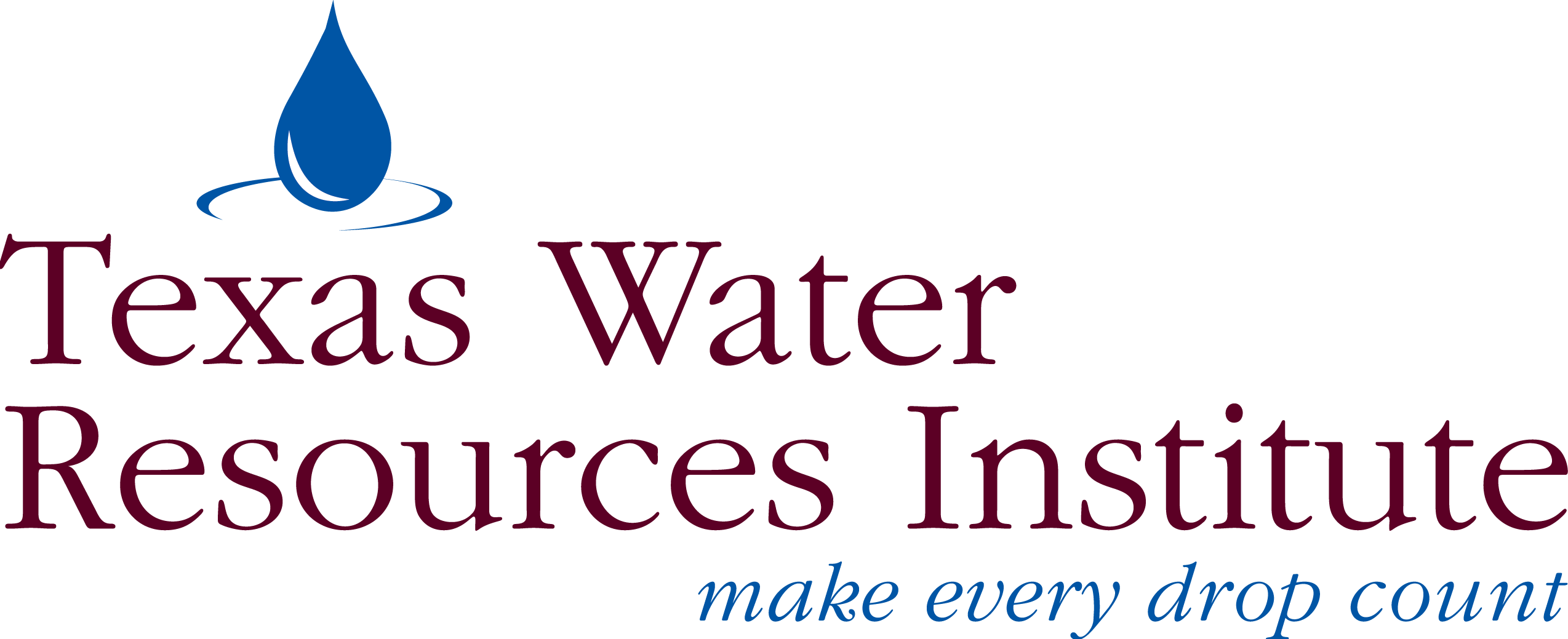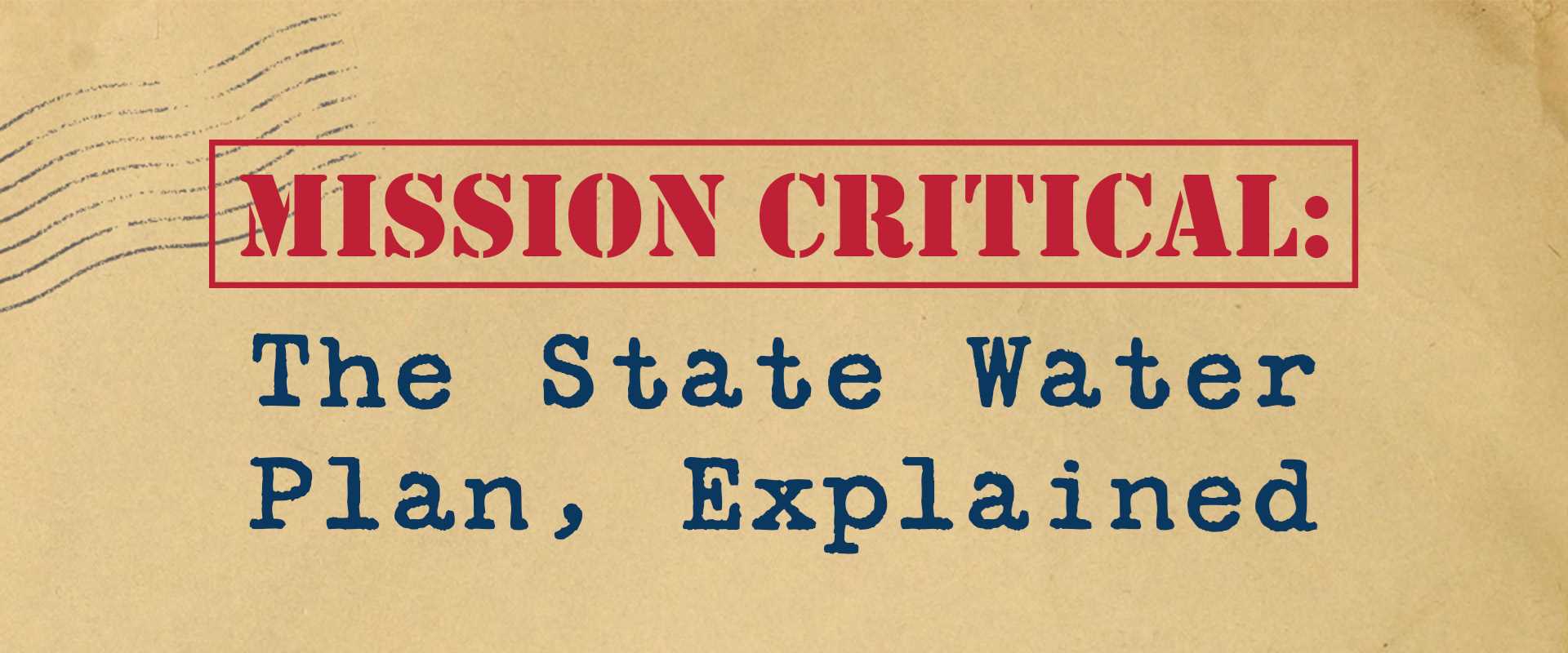To prevent water supply shortfalls during future extreme droughts, new water supply strategies must be funded and implemented — and this plan is Texas’ official path forward.
“Failure is not an option,” says NASA Flight Director Gene Krantz in the film Apollo 13, a fictionalized quote portraying the real mission’s determination to save its three astronauts.
The same could be said by Texans staring down the inescapable truth of Texas water planning: our population is growing while our water supplies are not.
The Texas Water Development Board (TWDB) estimates that if Texas does not develop more water supplies and supply strategies, Texas would face a potential water shortage of 6.9 million acre-feet per year in 2070 if drought of record conditions occurred.
And that potential failure — failure to provide adequate water for all Texans in the event of another extraordinary drought — state leaders say that failure is not an option.
Estimated reading time: 8 minutes
More Information
- Interactive State Water Plan – Texas Water Development Board (TWDB)
- 2022 State Water Plan – TWDB
- 2026 Regional Water Plans – TWDB
- Texas Water Fund – TWDB
- State Water Implementation Fund for Texas – TWDB
Want to get txH20 delivered right to your inbox? Click to subscribe.
But, it’s going to take all hands on deck to prepare for the worst.
Planning for worst-case scenarios
The state’s demographer and TWDB demographic researchers project that Texas’ population is anticipated to increase 73% between 2020 and 2070, from 29.7 million to 51.5 million. As water users increase, water demand is also projected to increase, from 17.7 million to 19.2 million acre-feet per year, and Texas’ existing water supplies are projected by TWDB to decline by approximately 18% between 2020 and 2070, primarily due to aquifer depletion.
With those demands on the horizon, the state has invested significant resources and statewide collaboration into developing the state water plan.
“TWDB is tasked by statute to develop a plan that identifies water supply needs and how those needs would be met in a recurrence of the drought of record,” said Temple McKinnon, director of the Water Supply Planning Division in TWDB’s Office of Planning. The division is responsible for developing the state water plan.
“That drought of record distinction is important,” she said. “This is a plan to meet or address needs during a recurrence of drought — it’s not the same as what utilities typically do, which is average condition planning.”
The drought of record for most Texas counties is the 1950s drought, or the 2011 drought for some.
The state water plan is not about everyday water supply planning, McKinnon said. This plan is focused on how to keep Texas afloat when extreme hydrological and meteorological drought conditions persist.
How will Texas bridge the gaps?
Preventing a 6.9 million acre-foot water deficit in a future drought of record will only be possible if new water conservation and water supply strategies are funded and implemented, TWDB planners say.
“The state water plan identifies the potential needs and effective strategies to address them, but it is up to individual project sponsors to implement those strategies,” McKinnon said. Project sponsors are usually municipal water utilities, river authorities, cities or local governments.

Amistad National Recreation Area at Amistad Reservoir where the Rio Grande, the Devils River, and the Pecos River flow together near Del Rio, Texas.
Photo by Sam Craft, Texas A&M AgriLife.
TWDB plans on a 5-year cycle, and a new state water plan is published every 5 years.
“The state is producing a plan and everybody’s bringing their local planning efforts to the table, and it will address anticipated water needs over the next 50 years if it is implemented.”
The strategies identified by the 2022 State Water Plan to bridge the water deficit include, but are not limited to:
- Surface water: creating new reservoirs and other new projects, including surface water pipelines.
- Conservation and drought management: saving water through technology, programs and drought condition-based restrictions.
- Reuse: building new water reuse facilities and infrastructure.
- Groundwater: using treated brackish groundwater and other new groundwater sources.
- Seawater: building additional desalination facilities to treat and use seawater.
- Aquifer storage and recovery: storing water in aquifers for later use.
Two of those categories account for 67.9% of the additional water supplies: surface water, and demand reduction (conservation and drought management). (See infographic.)

Surface water strategies
In the 2022 plan, regional planning groups recommended 23 new major reservoirs be built by 2070, providing 866,000 acre-feet of water per year. The status of those proposed lakes as of spring 2025 was:
- 2 reservoirs have completed construction.
- 5 have received TCEQ water rights permits, and design and/or land acquisition is underway.
- 3 have received a TCEQ water rights permit.
- 13 have yet to be issued a TCEQ water rights permit.
Over the past century in Texas, reservoir construction has slowed. This is “due, in part, to the fact that there remain very few viable sites for new major reservoirs, permits are much more difficult to obtain due primarily to environmental concerns, and the cost of construction has gone up faster than the rate of inflation,” according to the TWDB website.
Water conservation strategies
The 2022 State Water Plan detailed water conservation and drought management strategies for municipal, agricultural and industrial water users.


Municipal conservation includes water-loss prevention by utilities; state policies require water-loss audits and state programs help fund water-loss prevention. Municipal conservation strategies in the regional plans included:
- Metering of all new connections and retrofitting existing connections.
- System water audits, water-loss controls, and rapid leak detection and repair.
- Public education and incentives for water conservation indoors and on landscaping.
- Water-efficient plumbing fixtures and rebates for purchasing them.
- Stronger water conservation pricing structures that discourage waste.
- Year-round landscape irrigation restrictions that also support healthy landscapes.
To support agricultural water conservation, TWDB’s Agricultural Water Conservation Grants Program supports the implementation of agricultural irrigation strategies. Agricultural water conservation best management strategies in the plans included:
- Efficiency-based changes to irrigation methods, equipment and crops.
- Conversion to Low Energy Precision Application systems.
- Irrigation scheduling.
Industrial water conservation strategies in the plans included:
- More efficient cooling and process-water practices.
- Water audits.
Funding the plan
In 2013, two new funding sources for the plan were created when the 83rd Texas Legislature and then statewide voters authorized a one-time, $2 billion investment from the Economic Stabilization Fund, or the Rainy Day Fund, to the State Water Implementation Fund for Texas (SWIFT) and the State Water Implementation Revenue Fund for Texas (SWIRFT).
SWIFT was designed to provide financial assistance specifically to projects listed in the state water plan, and the original $2 billion would be leveraged with revenue bonds over the next 50 years to finance approximately $27 billion in water supply projects, according to TWDB.
Then, in 2023 the 88th Texas Legislature passed legislation creating the Texas Water Fund and providing a one-time $1 billion appropriation to it, and voters approved it later that year. The Texas Water Fund is a special fund in the state treasury outside the general revenue fund. It is administered by TWDB to fund projects through existing financial assistance programs managed by TWDB, and through the New Water Supply for Texas Fund, also created by the 88th Legislature.
Recipients of these funds include municipal water utilities, rural counties and communities, river authorities, city governments, rural water supply corporations, irrigation districts and regional water authorities.
This year, the 89th Texas Legislature passed Senate Bill 7 and House Joint Resolution 7, both focused on water funding. SB 7 works in conjunction with HJR 7 to dedicate $1 billion in sales tax revenues to the Texas Water Fund, administered by TWDB. If HJR 7 is approved by Texas voters in the Nov. 4 election, then up to $20 billion over the next 20 years will be allocated for water infrastructure projects.
2027 plan in development
The next planning cycle is underway. Strategies from the 2022 plan are being implemented, and the next plan is in development, for 2026 publication.
“The plan is updated every 5 years, and this process begins with the 16 regional water planning groups,” McKinnon said. “According to statute, every regional group must include certain interest groups and then each planning group can add members as they decide. Draft regional plans were received this March and are now under agency and public review.”
The draft regional plans are published online, along with an interactive platform to facilitate public review: 2027.texasstatewaterplan.org. Following the review period, TWDB provides feedback to each planning group based on agency requirements, and then the planning groups address those comments and public input, and resubmit the final plans.
“We then compile that information into a state water plan and provide it for public review,” McKinnon said. “And then it is considered by our board for adoption.”




